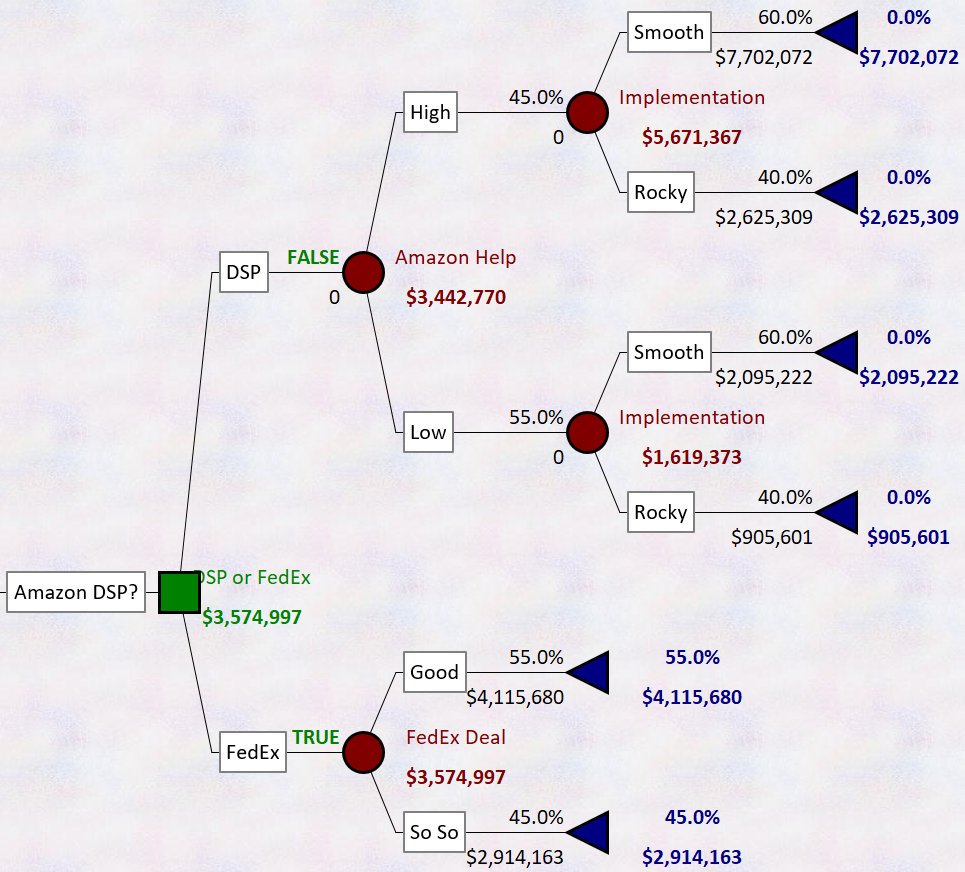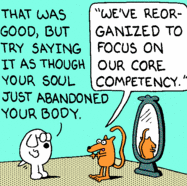 The Zoom live case is provided in an earlier post. Most instructors are all or partially online now so I’m sharing some online tips for teaching the case. The key task here is to use some asynchronous learning before a synchronous session so you can hit the ground running. One really important tip: Use worksheet assignments and Google docs for group breakouts in synchronous sessions. Here’s how:
The Zoom live case is provided in an earlier post. Most instructors are all or partially online now so I’m sharing some online tips for teaching the case. The key task here is to use some asynchronous learning before a synchronous session so you can hit the ground running. One really important tip: Use worksheet assignments and Google docs for group breakouts in synchronous sessions. Here’s how:
Asynchronous Zoom Assignments. I’ve created “worksheets” using essay questions in the Canvas survey/quiz tool. These questions are structured so the answers need not be long and are easy to grade. I have two worksheet assignments.
- Strategy Diamond Worksheet. I use Hambrick & Fredrickson’s strategy diamond framework to answer the question “what is strategy?” I entered the worksheet as a quiz/survey in canvas but the link is the answer key in MS Word. Specifically, the prompt is: Zoom recently entered conferencing hardware, describe the strategy using the framework (e.g., Arena, Differentiator, Staging/Pacing, Vehicles, Economic Logic). While these are short essay questions, it is easy to see if they are able to understand the framework and allows synchronous sessions to move faster.
- 5 Forces Worksheet. The 5 forces worksheet is also entered as a canvas survey. For each force, students list 3 actors ordered by their impact on industry profitability. Then they explain their ordering briefly. For buyer power: List several types of buyers in the video conferencing industry (at least 3) where each might be thought of as a market niche. Put them in order reflecting their willingness to pay (high to low). Then indicate a few factors that drive the differences in willingness to pay. Again, it is easy to grade since it is clear whether they understand from the order.
Synchronous Activities. Here, I rely on group breakouts with Google docs. Here are two such activities.
- Industry evolution. The link goes to a 5 forces worksheet for before, during and after the pandemic (3 tables in the doc). As a breakout exercise, I assigned 2 teams to each page of the worksheet and told them to start at different places in the framework. Then, after 10 minutes, I brought them to the main room, shared the Google Doc and asked the teams to describe their analysis to predict how the industry will develop (post pandemic) – rivalry, growth, willingness to pay, etc. These are used to develop assumptions in the next exercise.
- Financial Scenario Analysis. This link goes to a Google sheet with 8 Zoom financial models based on: 1) Rival product quality 2) Rival price competition, and 3) Zoom’s continued innovation/quality. Varying these 3 sources of uncertainty (H/L) generates 8 scenarios. I assigned each team to a scenario and at breakout, sent them all to the Google sheet to predict profit margins and revenue growth in that scenario. We then discussed the probabilities associated with each scenario. the bottom line was that the market capitalization was so high that selling the company should probably be considered as a very real alternative (e.g., what problem are you trying to solve?).
Contributed by Russ Coff

 I like to start the semester with a “ripped from the headlines” case. This is especially helpful if some of one’s cases are older. This semester, Zoom is a great alternative. The current
I like to start the semester with a “ripped from the headlines” case. This is especially helpful if some of one’s cases are older. This semester, Zoom is a great alternative. The current  How can we make online courses more interactive? Often people create videos of their PPT lectures as the basis of an online course. We know we can do better. It turns out that negotiation exercises can work surprisingly well online. My
How can we make online courses more interactive? Often people create videos of their PPT lectures as the basis of an online course. We know we can do better. It turns out that negotiation exercises can work surprisingly well online. My  Amazon is encouraging employee spinouts. They are offering employees $10,000 plus 3 months salary to quit and form entrepreneurial ventures in their
Amazon is encouraging employee spinouts. They are offering employees $10,000 plus 3 months salary to quit and form entrepreneurial ventures in their  As Netflix’s strategy unfolds it becomes clearer the extent to which it threatens traditional media companies. Initially, Netflix was a welcome partner who paid for access to older entertainment assets – new income streams for studios. More recently they have developed new content and lure top talent away from traditional media companies. Now, by offering a compelling portfolio of options, they compete more directly against traditional media companies. AT&T, Comcast, Fox, and Disney have taken notice of Netflix’s increasingly vertically integrated business model that bypasses traditional distributors (cable, DSL, satellite) and doesn’t rely on advertising revenue.
As Netflix’s strategy unfolds it becomes clearer the extent to which it threatens traditional media companies. Initially, Netflix was a welcome partner who paid for access to older entertainment assets – new income streams for studios. More recently they have developed new content and lure top talent away from traditional media companies. Now, by offering a compelling portfolio of options, they compete more directly against traditional media companies. AT&T, Comcast, Fox, and Disney have taken notice of Netflix’s increasingly vertically integrated business model that bypasses traditional distributors (cable, DSL, satellite) and doesn’t rely on advertising revenue.  Generic strategies are easy enough to explain and students typically feel that they understand. But do they really? Could they develop and implement a sound strategy? Sometimes it’s worth a bit of additional hands-on experience to make sure the lessons stick. Probably the most important message is alignment — the need to design the organization and product to fit the strategy. In other words, to make the appropriate tradeoffs.
Generic strategies are easy enough to explain and students typically feel that they understand. But do they really? Could they develop and implement a sound strategy? Sometimes it’s worth a bit of additional hands-on experience to make sure the lessons stick. Probably the most important message is alignment — the need to design the organization and product to fit the strategy. In other words, to make the appropriate tradeoffs.  The term “core competence” has taken hold in the business world. Not many academic terms break through to common usage so this might be viewed as a tremendous success. Unfortunately, it isn’t clear that it is particularly useful with the modified practitioner definition. As it is commonly used, it seems to mean “stuff the firm is pretty good at.” Unlike
The term “core competence” has taken hold in the business world. Not many academic terms break through to common usage so this might be viewed as a tremendous success. Unfortunately, it isn’t clear that it is particularly useful with the modified practitioner definition. As it is commonly used, it seems to mean “stuff the firm is pretty good at.” Unlike  The
The  The augmented reality (AR) game,
The augmented reality (AR) game,  Successful strategy is often a combination of luck firm specific skills and favorable conditions. AmorePacfic makes a great ripped-from-the-headlines case since it rose to be the #1 South Korean firm buoyed by a growing and large domestic demand from a growing population. Hallyu – the Korean equivalent of Hollywood was also a driving factor as South Koreans want to look like their favorite stars and use the same cosmetic products and that includes men. In fact, it is estimated that a whopping 20% of South Korean men use cosmetic products on a regular basis. AmorPacific capitalized on this growing trend by building up its brand and investing in R&D and ultimately riding the popularity of K-pop and K-movies to expand internationally. At a time that demand is softening, K-cosmetics are still growing with exports increasingly exceeding imports and Korean cosmetics brands now more popular than European brands in China and increasing their penetration in many countries including China, Hong Kong, Japan, the US, Vietnam, and in a surprising list of other countries such as Poland where their addition to Sephora’s product line and other large retailers will ensure broad distribution. How has a $150 1.7 oz managed to gain global popularity? Some materials for the case might include:
Successful strategy is often a combination of luck firm specific skills and favorable conditions. AmorePacfic makes a great ripped-from-the-headlines case since it rose to be the #1 South Korean firm buoyed by a growing and large domestic demand from a growing population. Hallyu – the Korean equivalent of Hollywood was also a driving factor as South Koreans want to look like their favorite stars and use the same cosmetic products and that includes men. In fact, it is estimated that a whopping 20% of South Korean men use cosmetic products on a regular basis. AmorPacific capitalized on this growing trend by building up its brand and investing in R&D and ultimately riding the popularity of K-pop and K-movies to expand internationally. At a time that demand is softening, K-cosmetics are still growing with exports increasingly exceeding imports and Korean cosmetics brands now more popular than European brands in China and increasing their penetration in many countries including China, Hong Kong, Japan, the US, Vietnam, and in a surprising list of other countries such as Poland where their addition to Sephora’s product line and other large retailers will ensure broad distribution. How has a $150 1.7 oz managed to gain global popularity? Some materials for the case might include: Economics-games.com
Economics-games.com Differentiation can be a challenge if existing products have identified the most central value propositions for customers. Increasingly, firms must differentiate using paths that may not follow others and there may be good reasons that rivals have left the path uncharted. Here is an example of differentiation whose time may not have come…
Differentiation can be a challenge if existing products have identified the most central value propositions for customers. Increasingly, firms must differentiate using paths that may not follow others and there may be good reasons that rivals have left the path uncharted. Here is an example of differentiation whose time may not have come…
 Nonsubstitutability is a critical resource attribute for sustaining a competitive advantage. Otherwise, a rival may find a different resource that can nullify an advantage without actually imitating the focal firm’s resource or capability. An example might be Apple’s iPhone patent for the “screen bounce” when the user scrolls to the bottom of a page or list. Early Android phones had the same feature but, more recent phones,
Nonsubstitutability is a critical resource attribute for sustaining a competitive advantage. Otherwise, a rival may find a different resource that can nullify an advantage without actually imitating the focal firm’s resource or capability. An example might be Apple’s iPhone patent for the “screen bounce” when the user scrolls to the bottom of a page or list. Early Android phones had the same feature but, more recent phones,  Lego profits have more than doubled in the last five years. The company has sold non-core businesses and doubled down on the core building block products. They are the undisputed king of building toys. A
Lego profits have more than doubled in the last five years. The company has sold non-core businesses and doubled down on the core building block products. They are the undisputed king of building toys. A